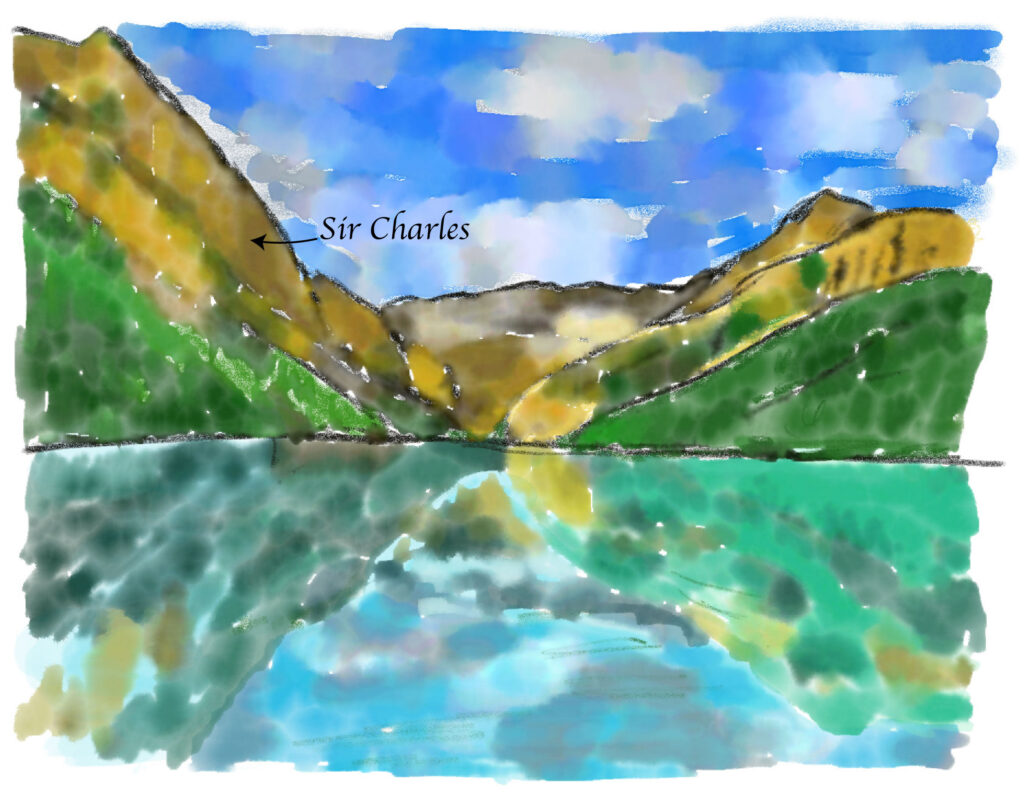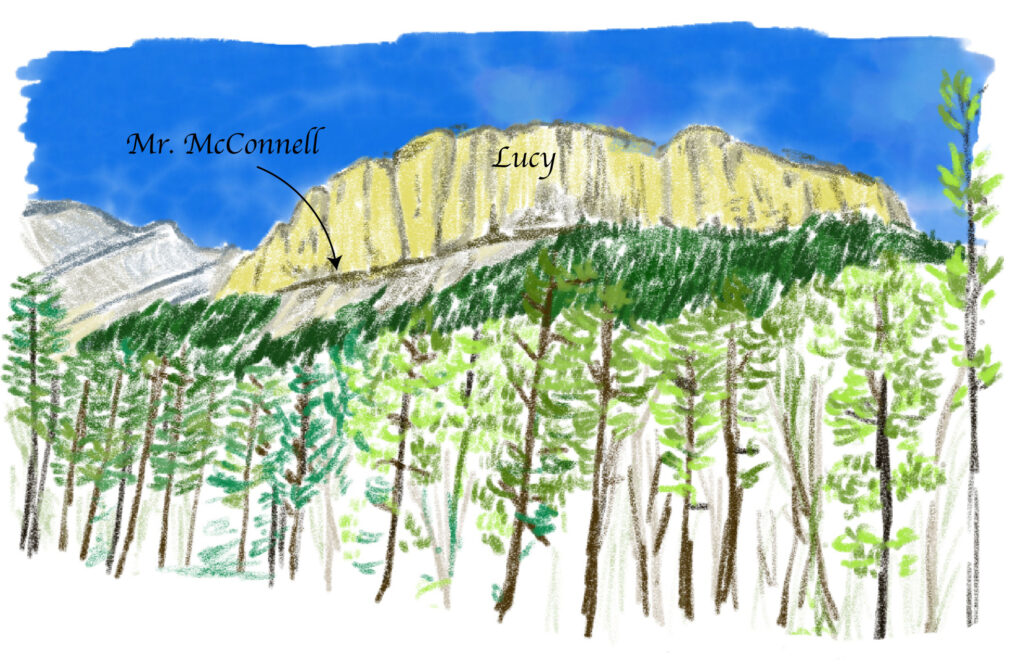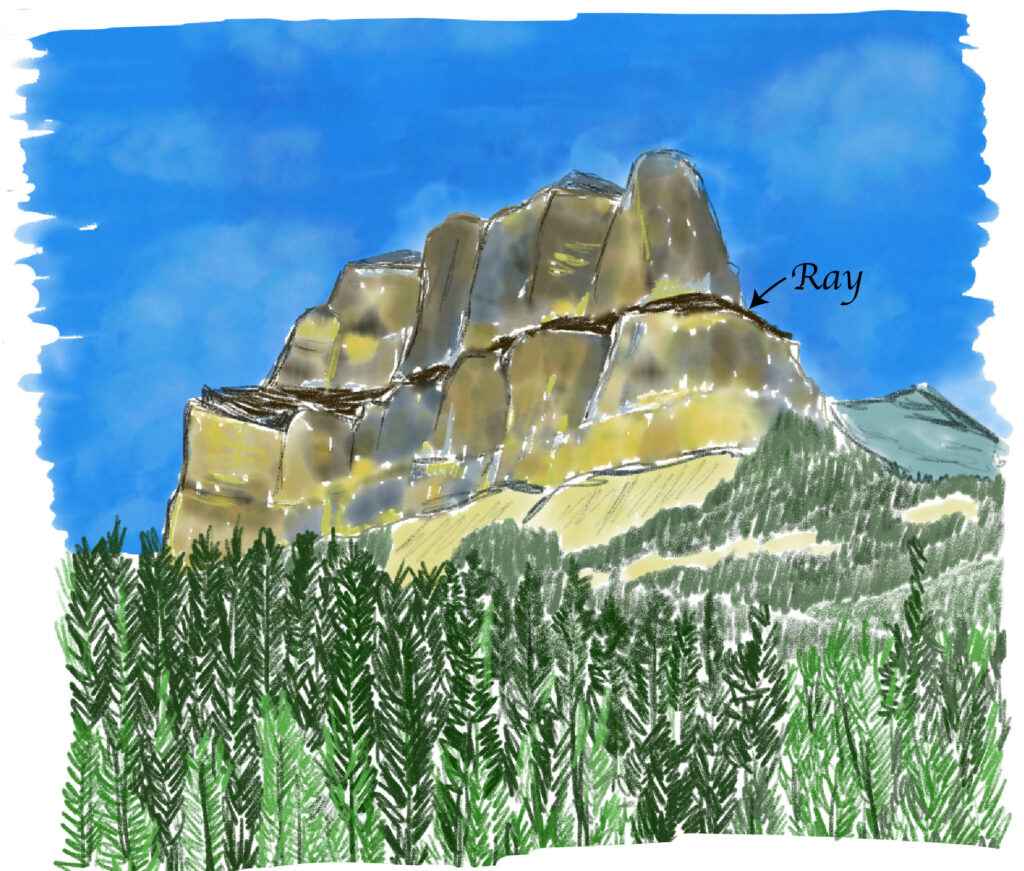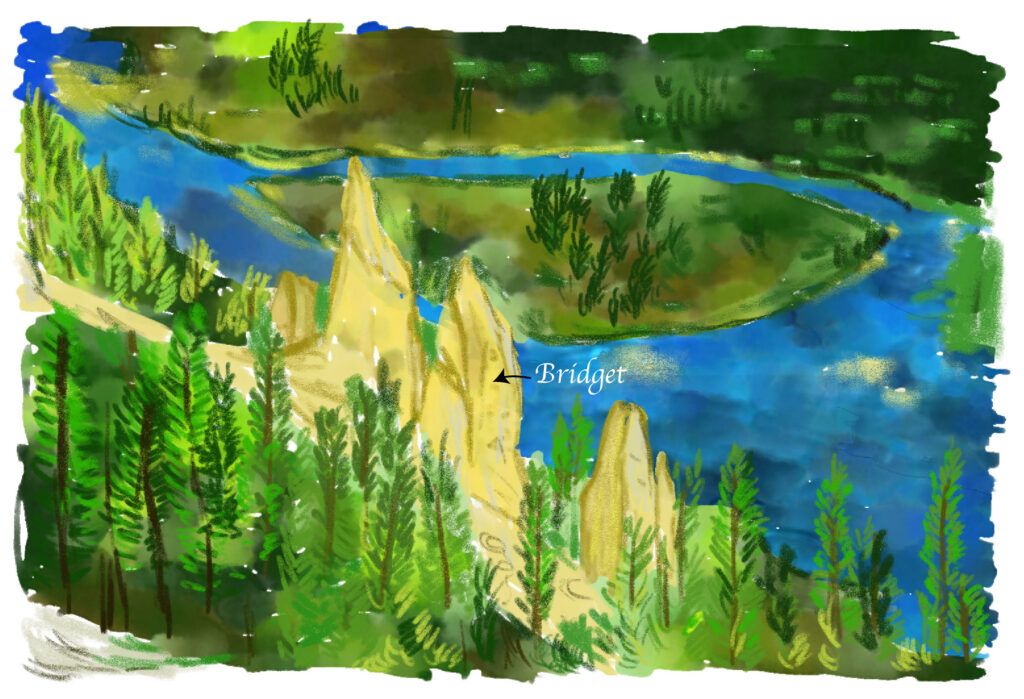Written by Brennan Black
Captain Susi Sanidine has had a fascinating life. In her early years, she was blasted from the magma chamber of an island volcano west of Canada. She travelled in a cloud of volcanic ash before being waylaid by a thunderstorm. She took a 300-million-year nap on the ocean bed. She was lifted from the ocean floor during the formation of the Canadian Rockies. And she has settled into her home at the bottom of Jura Creek canyon.

By now you’ve probably come to realize that Captain Susi Sanidine isn’t some immortal superhero but is, in fact, a mineral, and she’s lived an immense geological life. Her story is just one of many included the book, Rocky Voices: The Memories of Minerals that Form the Rocky Mountains by Dr. Eva Enkelmann, PhD. The University of Calgary associate professor in geology wrote the book for kids and teens, or really anybody with an interest, but no background, in geoscience.
“I was aiming to write geological stories in a different way,” says Enkelmann. “There’s more than just the amazement of looking at all the high peaks. There is a story behind why they look like that. Those are the stories I wanted to write.” One way of doing this was by making the minerals actual characters in these stories.
The history of Canada as a country is just over 150 years, but the history of Canada as a geological formation stretches back more than 250 million years.
“By telling the stories of individual mineral characters, I hope people get an appreciation of their really long lives,” says Enkelmann. “How they change and how they travel. Some are young and some are old. They go through transformations.
“We all have our own histories, and these minerals do, too.”
Enkelmann skips technical terms and the scientific names of certain formations and rock units. Instead, she personifies individual minerals (complete with names), and includes a glossary of terms at the end of each chapter.
Read Rocky Voices: The Memories of Minerals that Form the Rocky Mountains before your next road trip, or take it along with you for a deeper appreciation of who they are and how they formed. These are a few minerals you’ll meet along the way and where to see them.
Mineral “characters” to look for in the Rocky Mountains
Illustrations by Eva Enkelmann

Sir Charles Zircon
What it is: A mineral that is very hard and durable. Many rocks contain zircon, but only in small amounts.
Where to find it: Rock cliffs surrounding Lake Louise.
Lucy Calcite
What it is: A mineral that composes the gray rock known as carbonate. Carbonate is the main building block of the big cliff-forming rock layers you can see in the Rocky Mountains.
Where to find it: Cliff of Mount Yamnuska, east of Canmore; can be seen from the parking area of the mountain.


Ray Clay
What it is: A mineral group composed of silica layers with a large variety of elements built between the layers. With changing temperatures, pressures and chemistry, clay minerals change easily from one kind to another and can also change size.
Where to find it: The shale layer that separates the cliffs of Castle Mountain.
Bridget Cement
What it is: Any minerals that form between grains or rock pieces and glue them together. This process is called cementation and transforms loose material into rock.
Where to find it: The hoodoos near Banff overlooking the Bow River.




